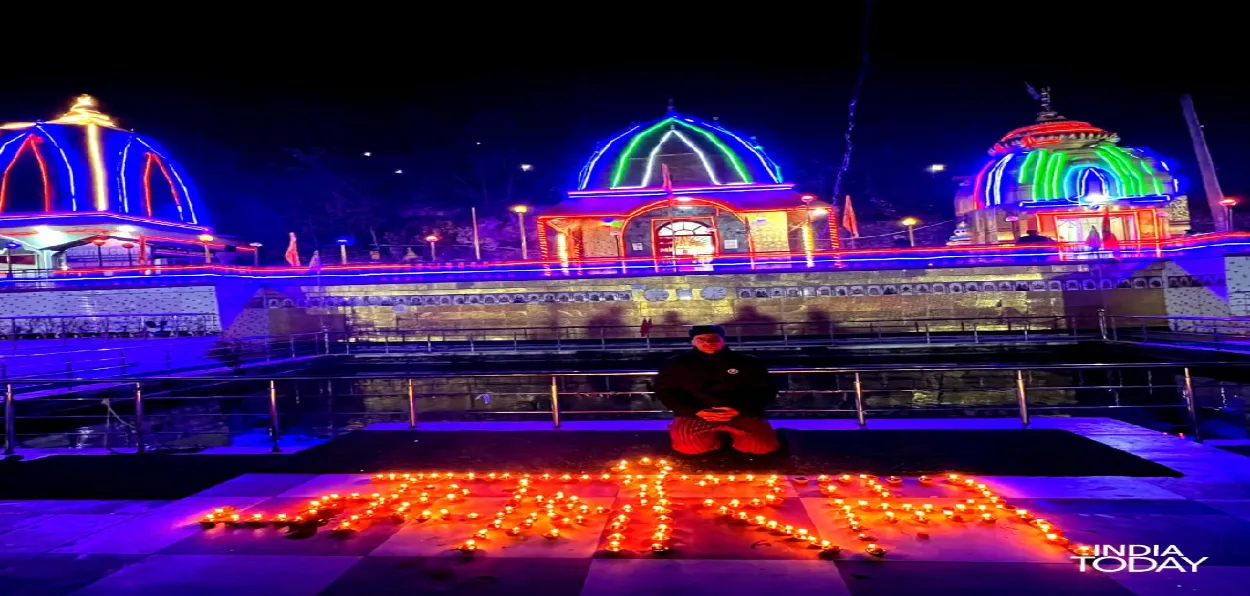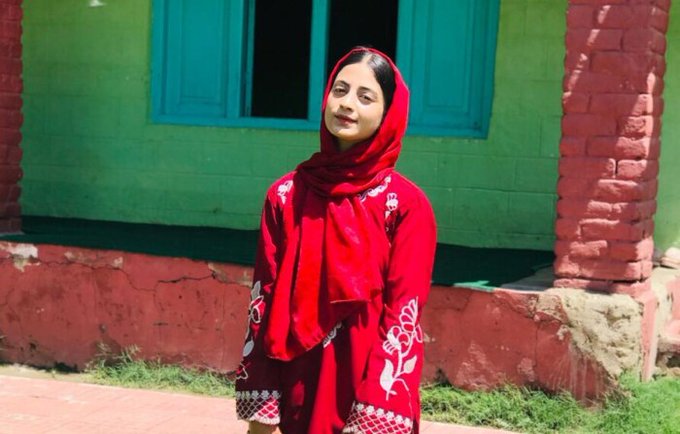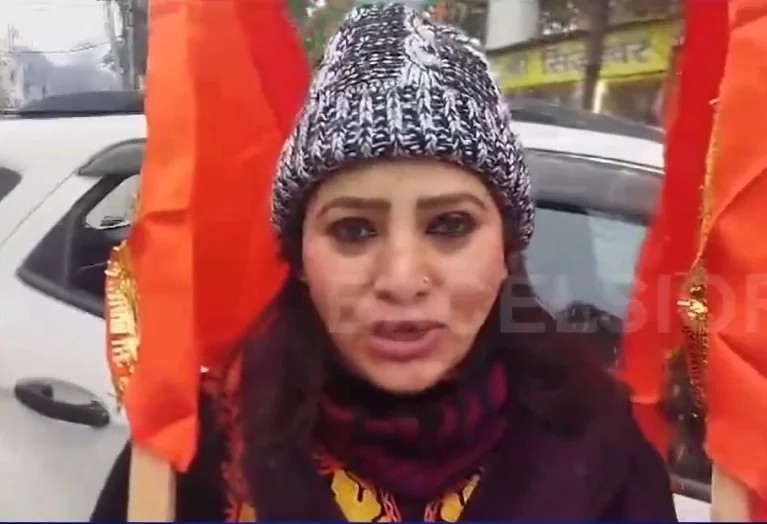
Ahmed Ali Fayyaz/Jammu
As the nation was engrossed in witnessing a historic moment of the consecration of Lord Ram’s temple at Ayodhya on Monday, a small but significant change was visible in Kashmir where many important temples including Shankaracharya and Kheerbhawani were illuminated and people thronged these to celebrate and pray on the occasion of “Ram’s return to his birthplace after 500 years”.
The day coincided with the 34th anniversary of the community’s mass exodus –also called the ‘holocaust’ – from Kashmir to escape from a morbid ambiance, slogans, threats, diktats, posters, and killings.
It was in the intervening night of January 20-21, 1990, that the bulk of the fear-stricken Kashmiri Pandits fled the Valley to Jammu and other places to save themselves from becoming victims of a volatile and violent campaign started by Pakistan-trained militants in the Valley.
The first Kashmiri pandit to be killed was a prominent Jan Sangh leader Tika Lal Taploo. He was gunned down in broad daylight at his home in Habbakadal Srinagar on 13 September 1989. It followed the targeted killing of Intelligence Bureau officials Tej Kishen Razdan and Moti Lal Bhan.
Vaishno Devi temple lit up on the pran pratishtha ceremony
Processions raising Islamic and anti-Hindu slogans rent the air. As the obnoxious slogans targeting Hindu women were blared from the local mosques, it accentuated the fears leading to the community's mass exodus.
It was heartening to see Srinagar and many townships looking like any place in India, where Hindus and even Muslims illuminated temples and homes and burst firecrackers on the day of the opening of the Rama Lalla elegant temple at Ram Janambhoomi in Ayodhya.
There were no negative reactions on social media; nobody attempted to spread hate against the followers of Ram who are an overwhelming majority across the country but a minuscule minority in Kashmir.
Many of the majority Muslim families on Monday watched the entire proceedings of ‘Pran Parishtha’, on television. The government had declared a half-day holiday to enable people to watch the ceremony telecast live on TV.
Ram Mandir Pran Pratishtha celebrations at Shankaracharya Temple in Srinagar, Kashmirpic.twitter.com/64sFXTBL4L
— Shivaye 🔱 (@shivaye01) January 22, 2024
Hundreds of devotees, who included Hindu visitors from different Indian States as well as the resident and displaced Kashmiri Pandits, thronged the Zabarvan hill in the biting cold of Chilla-e-Kalaan to climb 272 steps to the Shankaracharya temple in Srinagar. Many of them recited chapters of Ramayana before paying obeisance to the deity.
All these celebrations at Shankaracharya and elsewhere in the Union Territory ran parallel to the grand Pran Pratishtha at Ayodhya.
In Jammu, the festivity—many called it ‘mini-Diwali’—was at its best at the capital city’s Raghunath Bazar temple. The holy town of Katra, with hundreds of profusely decorated hotels and temples, looked radiant and resplendent with illumination. Like on Diwali, firecrackers signified the return of Rama across the region up to Rajouri, Poonch, and Kishtwar.
It was in the intervening night of January 20-21, 1990, that the bulk of the fear-stricken Kashmiri Pandits fled the Valley to Jammu and other places to save themselves from becoming victims of a volatile and violent campaign started by Pakistan-trained militants in the Valley.
Syeda Zehra Batool
A young girl from Uri, North Kashmir Syeda Batool Zehra’s bhajan on Lord Rama in the Pahari language went viral on the internet. She sounded elated when Prime Minister Modi made a mention of her song.
“I wanted to prove wrong all those who claim there’s no contribution from Jammu and Kashmiri to the Ram temple. If they have reverence for our shrines, mosques, and places of worship, why shouldn’t we reciprocate? Our beloved Hazrat Imam Hussain has taught us patriotism, and love for the nation we live in. We live in India and we have respect for India. With my father Arif Kazmi, who is a Pahari singer, I have visited the whole country”, Zehra said.
Sadiqa Khan, another young woman from Kashmir’s Kupwara appeared in Srinagar with two saffron flags and announced her desire to participate in the consecration ceremony at Ayodhya.
 Sadiqa Khan (Facebook)
Sadiqa Khan (Facebook)
“I have a lot of reverence for Lord Rama. I had decided to visit Ayodhya after the consecration, fearing a huge rush there on 22 January. But, yesterday I was jolted out of wits. Lord Rama came into my dream. He told me that for my huge love and reverence for him, I must visit on the same day when he was coming there”, Sadiqa said.
Sadiqa said that she had driven to Srinagar from Kupwara in her car. She announced a free lift to anybody having equal devotion to the deity and intending to visit Ayodhya. “I will offer my prayers and chant Bhajans to please Lord Rama in Ayodhya. I took Allah’s name and started off my journey”, Sadiqa asserted two days before the consecration day.
Sadiqa, a resident of Kupwara which was known as the “Gateway of Militancy” in the 1990s. Most of the militant recruits went out to Pakistan and Pakistan-occupied Kashmir for arms training and infiltration into the valley through different routes of Kupwara. It has nightmarish memories of the killing of hundreds of Muslims and Pandits.
One of such victims was a middle-aged woman who had briefly migrated to Jammu but returned soon. She was gunned down and killed in cold blood at her home in Sogam, Kupwara.
ALSO READ: How a Kashmiri tribesman foiled Pak's Operation Gibraltar and won over his lady love
A junior government employee Girja Tickoo had also migrated to Jammu in January 1990. According to several reports in the media, she returned in June 1990 to draw her salary. She was reportedly kidnapped and brutally killed in a village not far away from Sadiqa Khan’s in Kupwara.
